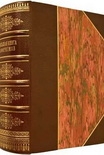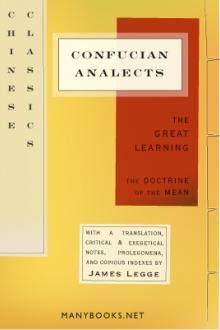Myths and Legends of China E. Werner (best reads of all time .TXT) 📖

- Author: E. Werner
Book online «Myths and Legends of China E. Werner (best reads of all time .TXT) 📖». Author E. Werner
Wu Yün, armed with his magic sword, entered the lists against Chun T’i; but the latter opened his mouth and a blue lotus-flower came out and stopped the blows aimed at him. Other thrusts were met by similar miracles.
“Why continue so useless a fight?” said Chun T’i at last. “Abandon the cause of the Shang, and come with me to the Western Paradise. I came to save you, and you must not compel me to make you resume your original form.”
An insulting flow of words was the reply; again the magic sword descended like lightning, and again the stroke was averted by a timely lotus-flower. Chun T’i now waved his wand, and the magic sword was broken to bits, the handle only remaining in Wu Yün’s hand. Page 324
The Golden-bearded Turtle
Mad with rage, Wu Yün seized his club and tried to fell his enemy. But Chun T’i summoned a disciple, who appeared with a bamboo pole. This he thrust out like a fishing-rod, and on a hook at the end of the line attached to the pole dangled a large golden-bearded turtle. This was the Immortal Wu Yün, now in his original form of a spiritual turtle. The disciple seated himself on its back, and both, disappearing into space, returned to the Western Heavens.
The Battle Won
To conquer T’ung-t’ien Chiao-chu was more difficult, but after a long fight Chun T’i waved his Wand of the Seven Treasures and broke his adversary’s sword. The latter, disarmed and vanquished, disappeared in a cloud of dust. Chun T’i did not trouble to pursue him. The battle was won.
Buddhahood
A disciple of T’ung-t’ien Chiao-chu, P’i-lu Hsien, ‘the Immortal P’i-lu,’ seeing his master beaten in two successive engagements, left the battlefield and followed Chun T’i to the Western Paradise, to become a Buddha. He is known as P’i-lu Fo, one of the principal gods of Buddhism.
Chun T’i’s festival is celebrated on the sixth day of the third moon. He is generally shown with eight hands and three faces, one of the latter being that of a pig. Page 325
Chapter XIV
How the Monkey Became a God
The Hsi Yu Chi
In dealing with the gods of China we noticed the monkey among them. Why and in what manner he attained to that exalted rank is set forth in detail in the Hsi yu chi1—a work the contents of which have become woven into the fabric of Chinese legendary lore and are known and loved by every intelligent native. Its pages are filled with ghosts, demons, and fairies, good and bad, but “it contains no more than the average Chinese really believes to exist, and his belief in such manifestations is so firm that from the cradle to the grave he lives and moves and has his being in reference to them.” Its characters are said to be allegorical, though it may be doubted whether these implications may rightly be read into the Chinese text. Thus:
Hsüan (or Yüan) Chuang, or T’ang Sêng, is the pilgrim of the Hsi yu chi, who symbolizes conscience, to which all actions are brought for trial. The priestly garment of Hsüan Chuang symbolizes the good work of the rectified human nature. It is held to be a great protection to the new heart from the myriads of evil beings which surround it, seeking its destruction.
Sun Hou-tzŭ, the Monkey Fairy, represents human nature, which is prone to all evil. His unreasonable vagaries moved Hsüan Chuang to compel him to wear a Head-splitting Helmet which would contract upon his head in moments of waywardness. The agonizing Page 326pressure thus caused would bring him to his senses, irrespective of his distance from his master.
The iron wand of Sun Hou-tzŭ is said to represent the use that can be made of doctrine. It was useful for all purposes, great or small. By a word it could be made invisible, and by a word it could become long enough to span the distance between Heaven and earth.
Chu Pa-chieh, the Pig Fairy, with his muck-rake, stands for the coarser passions, which are constantly at war with the conscience in their endeavours to cast off all restraint.
Sha Ho-shang, Priest Sha, is a good representation of Mr Faithful in The Pilgrim’s Progress. In the Hsi yu chi he stands for the human character, which is naturally weak and which needs constant encouragement.
Legend of Sun Hou-tzŭ
The deeds of this marvellous creature, the hero of the Hsi yu chi, are to be met with continually in Chinese popular literature, and they are very much alive in the popular mind. In certain parts a regular worship is offered to him, and in many temples representations of or legends concerning him are to be seen or heard.
Other names by which Sun Hou-tzŭ is referred to are: Sun Hsing-chê, Sun Wu-k’ung, Mei Hou-wang, Ch’i-t’ien Ta Shêng, and Pi-ma Wên, the last-mentioned being a title which caused him annoyance by recalling the derisive dignity conferred upon him by Yü Huang.2 Throughout the remainder of this chapter Sun Hou-tzŭ will be shortly referred to as ‘Sun.’
The Birth of the Monkey
Beyond the seas, in the Eastern continent, in the kingdom of Ao-lai, is the mountain Hua-kuo Shan. Page 327On the steep sides of this mountain there is a rocky point 36 feet 5 inches high and 24 feet in circumference. At the very top an egg formed, and, fructified by the breath of the wind, gave birth to a stone monkey. The newly-born saluted the four points of the horizon; from his eyes shone golden streaks of lightning, which filled the palace of the North Pole Star with light. This light subsided as soon as he was able to take nourishment.
“To-day,” said Yü Huang to himself, “I am going to complete the wonderful diversity of the beings engendered by Heaven and earth. This monkey will skip and gambol to the highest peaks of mountains, jump about in the waters, and, eating the fruit of the trees, will





Comments (0)